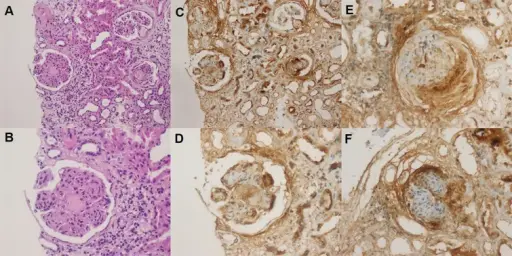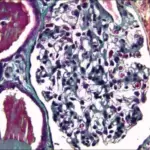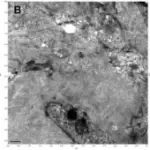Diabetic nephropathy is a clinical syndrome characterized by reduced GFR, albuminemia, and elevated arterial blood pressure.
What is the Pathology of Diabetic Nephropathy?
The pathology of diabetic nephropathy is:
-Etiology: The cause of diabetic nephropathy is high blood pressure, high blood sugar levels.
-Genes involved: Unknown.
-Pathogenesis: The sequence of events that lead to diabetic nephropathy is mostly mediated by the metabolic and hemodynamic changes that occur as a result of diabetes. These changes affect the blood vessels of the kidney affecting normal function.
-Morphology: The morphology associated with diabetic nephropathy shows glomerular lesions, basal membrane thickening, glomerular aneurysm.
-Histology: The histology associated with diabetic nephropathy shows thickening of tubular basement membrane, mesangial expansion.
How does Diabetic Nephropathy Present?
Patients with diabetic nephropathy typically are females present at the age range of 10-60 years. The symptoms, features, and clinical findings associated with diabetic nephropathy include proteinuria, hypertension, decreased glomerular filtration rate, frequent urination, dyspnea, confusion, and edema.
How is Diabetic Nephropathy Diagnosed?
Diabetic nephropathy is diagnosed with urinalysis, urine albumin tests, glomerular filtration rate, imaging tests, and kidney biopsy.
How is Diabetic Nephropathy Treated?
Diabetic nephropathy is treated by either dialysis or kidney transplant.
What is the Prognosis of Diabetic Nephropathy?
The prognosis of diabetic nephropathy is good with a mortality rate of 10%.



